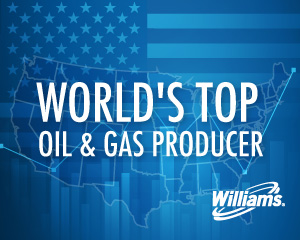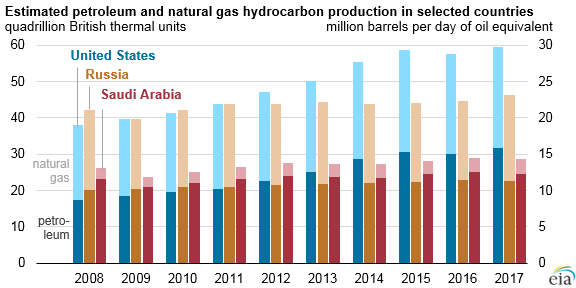According to the U.S. Energy Information Administration, the U.S. remained the world’s top producer of petroleum and natural gas hydrocarbons in 2017, reaching a record high.
The United States has been the world’s top producer of natural gas since 2009, when U.S. natural gas production surpassed that of Russia, and the world’s top producer of petroleum hydrocarbons since 2013, when U.S. production exceeded Saudi Arabia’s. Since 2008, U.S. petroleum and natural gas production has increased by nearly 60%.
For the U.S. and Russia, total petroleum and natural gas hydrocarbon production, measured in energy content, is almost evenly split between petroleum and natural gas, while Saudi Arabia’s production heavily favors petroleum.
U.S. dry natural gas production grew slowly in early 2017 because of unfavorable economic conditions at that time. Production increased during the last nine months of the year, ultimately leading to a 5.7 billion cubic feet per day (Bcf/d) difference between the first quarter and fourth quarter of 2017. From 2016 to 2017, domestic dry natural gas production increased by 1%, and U.S. liquefied natural gas exports quadrupled.

